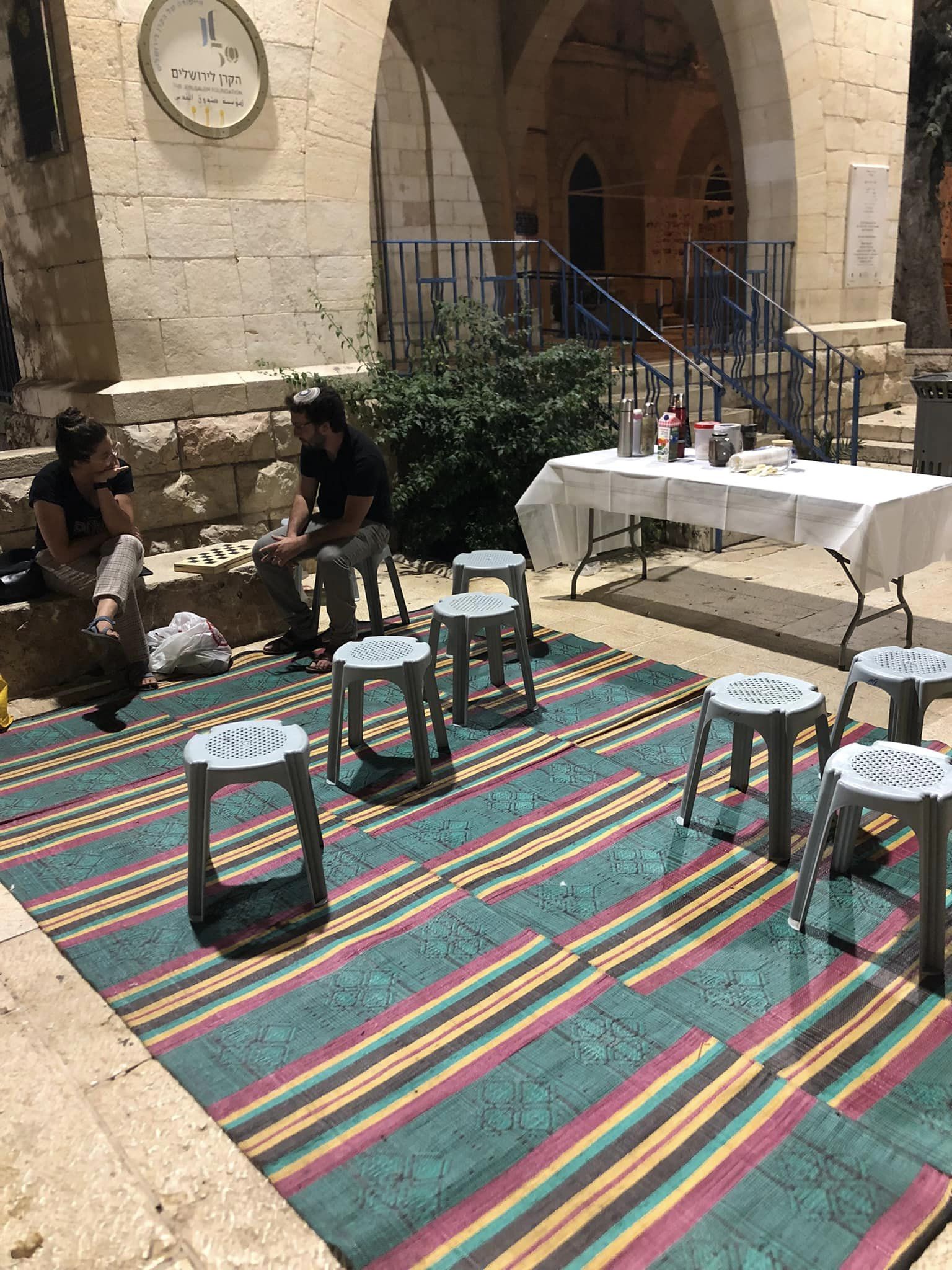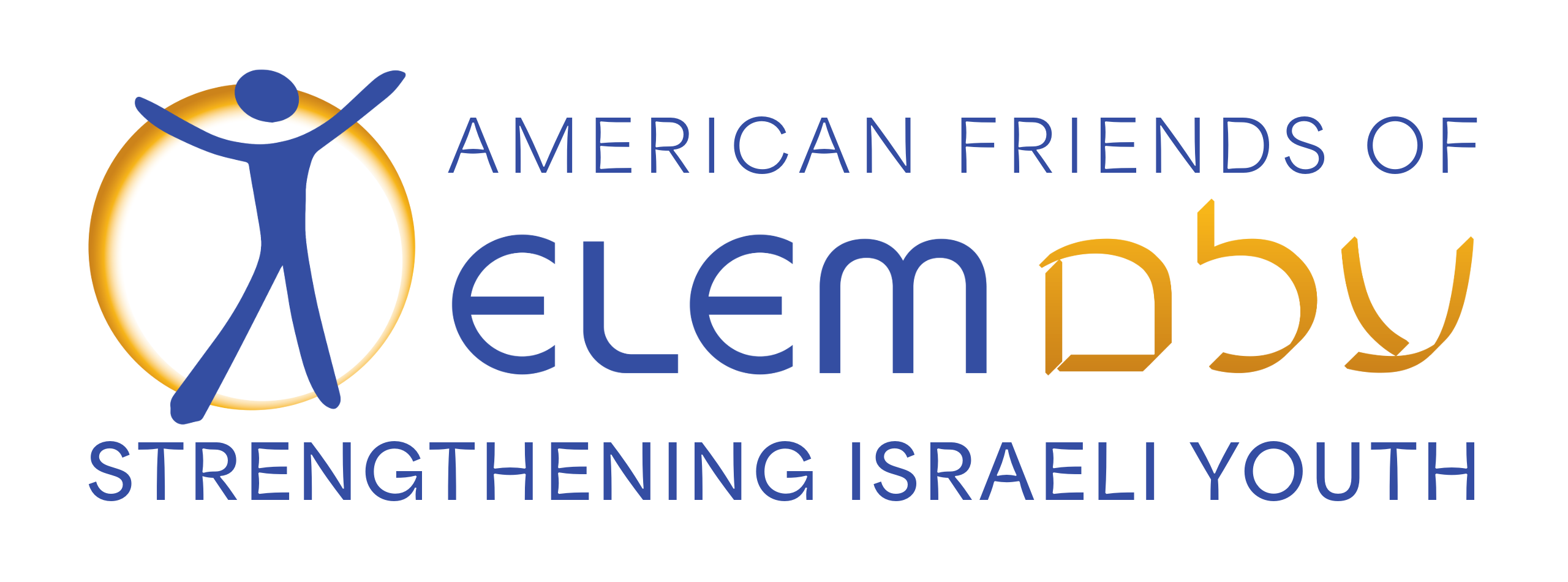Ori, Manager of ELEM’s Orshina center for boys who have been victims of sexual violence, shared with us the special work his team has been doing. Orshina was established in 2020 and is proof to ELEM constant evolution and our goal of leaving no youth behind.
40 years of ELEM!
40 isn’t just like any other number. In Judaism, the number 40 symbolizes process and passage between generations and eras.
The people of Israel walked the desert for 40 years as part of the process of changing from being slaves to being liberated. The Great Flood lasted 40 days and 40 nights, a time that was needed in order to “restart” the world. The 12 Spies spent 40 days in the land to familiarize themselves with it, and Moses spent 40 days on Mount Sinai to receive the Torah.
ELEM was founded 40 years ago following a realization that things couldn’t remain as they were.
ELEM was born due to a reality of painful and invisible distress of youth and young people, those whose lives pushed them to the hidden margins of society, to supervised hostels and boarding schools, to hospitalizations, to addiction, prostitution, and manipulation, and above all – to the street.
The fundamental idea ELEM chose to be at its center 40 years ago remains true today – “When people can’t come to get help and don’t receive services, the help and services will come to them.”
Professional solutions need to change to accommodate those who need them, not the other way around. That’s because there’s a deep understanding that the responsibility to create opportunities and spaces for change is, first and foremost, ours as a society. Only once those spaces exist can the youth take on some of the responsibility.
And so, 40 years ago, ELEM already created groundbreaking and mind-changing initiatives, initiatives such as ELEM’s vans, or our coffee-shop-look-alikes drop-in centers, A Real Home, our shelters, and The Heart Centers, our mentorship for independent living program, our Young Mothers program, Y-ELEM and our online services, and our centers for the treatment of sexual violence, both for victims and offenders.
It’s been 40 years, and ELEM is still spearheading the work with at-risk youth with initiatives and innovation.
One notable example is the establishment of Orshina, a social space for the treatment of young teenage boys who experienced sexual abuse. We’ve seen how these young adolescent boys fall between the cracks for years. How the disastrous intersection between sexual trauma and the will to deny it intertwine with the will for independence and freedom from the world of adults and the need to prove their manhood and control over their situations.
These youth choose to keep the entire events of the abuse a secret, even at the cost of significant emotional, physical, and social suffering, all in the name of being “normal” socially and “normal” within the family. They choke on the tears, push down the grief, and show the world a confident, rough front, aggressive even, hiding the terror and helplessness they’d experienced.
“Me? I’ve never experienced trauma! Sure, I’ve been through some hard times, but it never affected me. If anything, the opposite is true! It made me stronger!”
“That’s not abuse! I wanted it, and I chose it!”
“You should’ve seen the other guy. I messed him up!”
“Look, it was a weird thing, I didn’t really understand it, but it wasn’t rape!”
We hear these things every single day when we meet teens who’ve been through ongoing abuse, enormously horrific and traumatic cases, the kind that imprints on a victim’s body and soul forever, even if they choose to minimize it and their way of facing it is denial.
How can you help those who didn’t experience the fact that they were abused?
That’s where another one of ELEM’s philosophies comes in – the combination of multiple and diverse therapy approaches.
For years, those who’ve been working in the sexual trauma field have been working dynamically in the therapy room while adhering to a very clear, very consistent setting.
For years, those who’ve been working with youth have been using an informal approach, which minimizes the hierarchy factor, the authority factor. This approach makes boundaries flexible and creates a therapeutic space versus a room. It uses an ever-changing, open group work. Our understanding is that in order to reach teenage boys who have experienced trauma, we must combine these approaches, which are sometimes diametrically opposed. How do we do something like that?
Orshina Center was launched to undo these limiting ties, which allow no room for emotional pain and hurt. Starting therapy is perceived by most of these teenage boys as a deep contrast to their instincts and the way they feel inside.
Try and understand what it is that we’re asking of a boy who has experienced abuse but is also trying to discover his manhood and independence – “come over, get into a room with a shut door, with an adult whom you need to trust, whom you need to expose yourself to, speak of the worst that has happened to you and share about your feelings. You will depend on this adult, on his will and ability to help you.” This framework makes many teens anxious, and they fear it. This fear is due to a deep survival instinct.
So what do we do?
We change the framework. We break the walls separating the therapy rooms and offer group therapy, where the youth isn’t alone but with other youth, where that boy can feel a part of something, belonging, and it’s no longer his therapist saying, “You’re not alone.” He can actually see that he’s not alone.
It’s not yet another meeting with an adult he must trust and become vulnerable with while they sit alone in a room. It’s a group that holds no less power and meaning than those who guide it, a group of equals. We offer an alternative to the fear. We offer an option not to talk, just be, play, create, compete, cook, and eat together. And the group setting means that someone else can speak when you don’t feel like it. You don’t have to talk. The therapeutic and social work occurs regardless.
Still, working with teens who’ve been abused raises a whole lot of questions –
-The general idea when helping abused youth is helping them get some control back. Do I achieve that by allowing the youth to see the hurt within himself as well as the abuse he experienced?
-Maybe the opposite is true? Maybe by doing it, I pull the rug from under him, this denial that helps him live day to day without remembering or knowing the price of the trauma.
-When we unveil his helplessness, hurt, and suffering, do we weaken his ability to fit in the general youth population where there’s no tolerance and room for hurt and question marks?
-What do we do with the aggression and violence the youth has within himself?
-Does the group have to be comprised of youth from similar backgrounds in terms of the type of abuse, symptoms, and ways of dealing with the trauma? Is it better to have a diverse group?
And many other important questions.
The longer we work with the youth, the more questions and dilemmas we encounter. But ELEM’s basic approach remains – We choose to face these questions and be with the youth so they’re not alone in their distress and suffering. There’s no way to encounter their unstable worlds without some questions and dilemmas, and we choose to rise to the occasion and be with the youth wherever we can.




